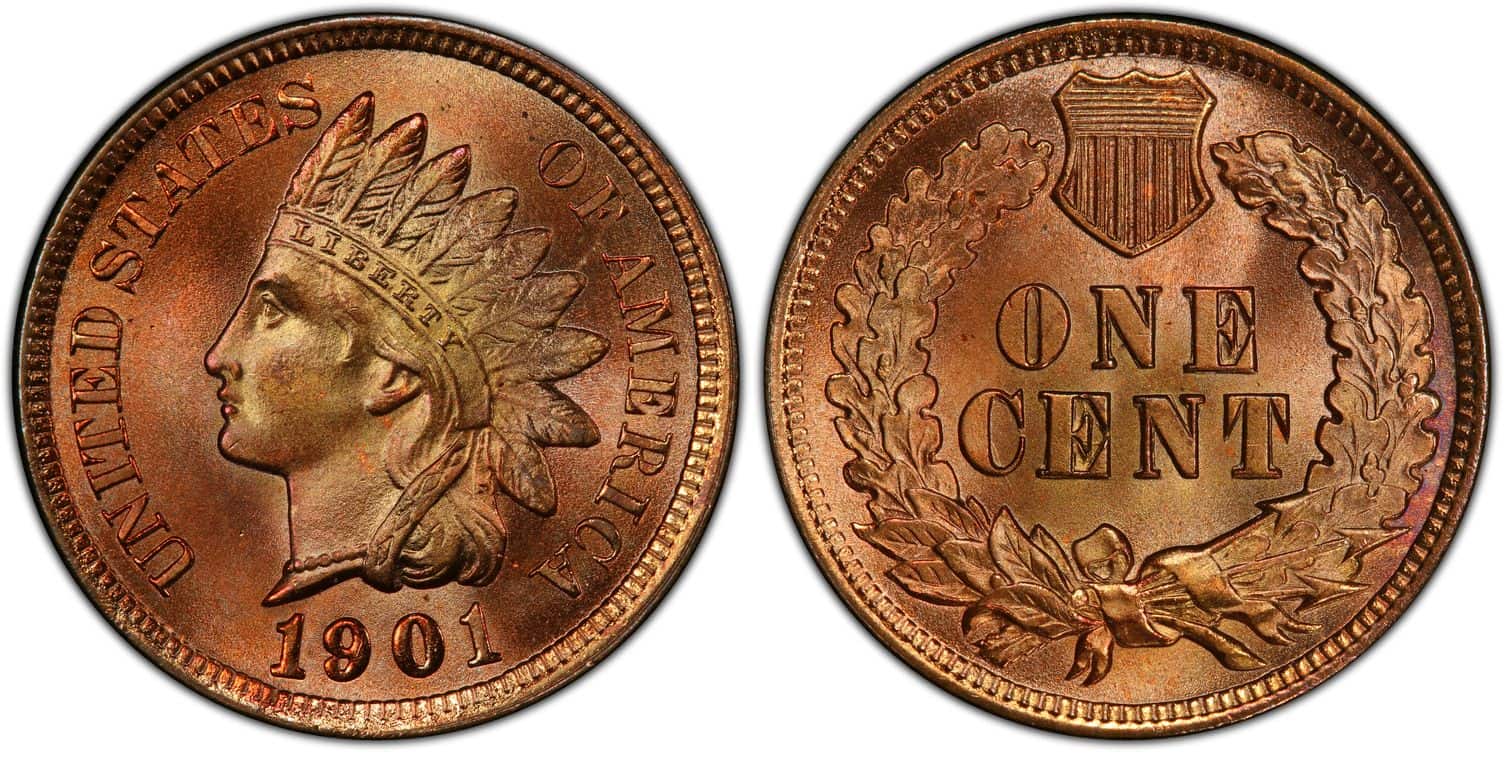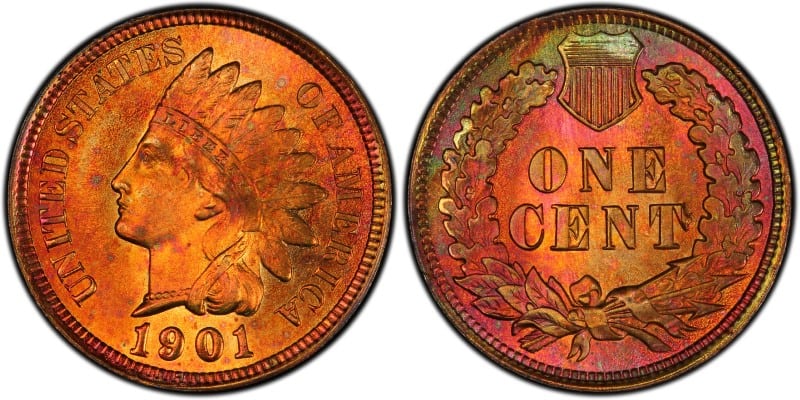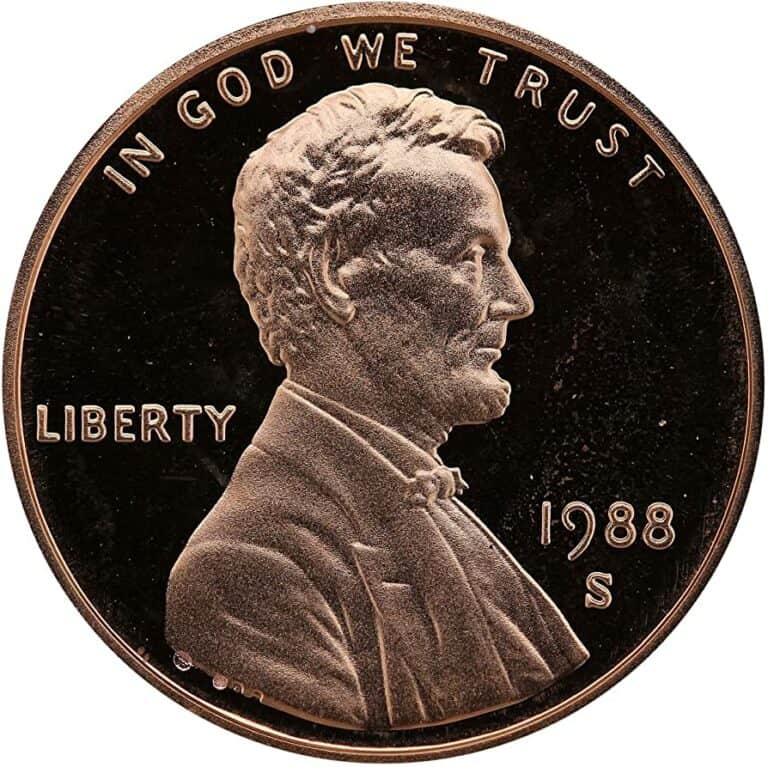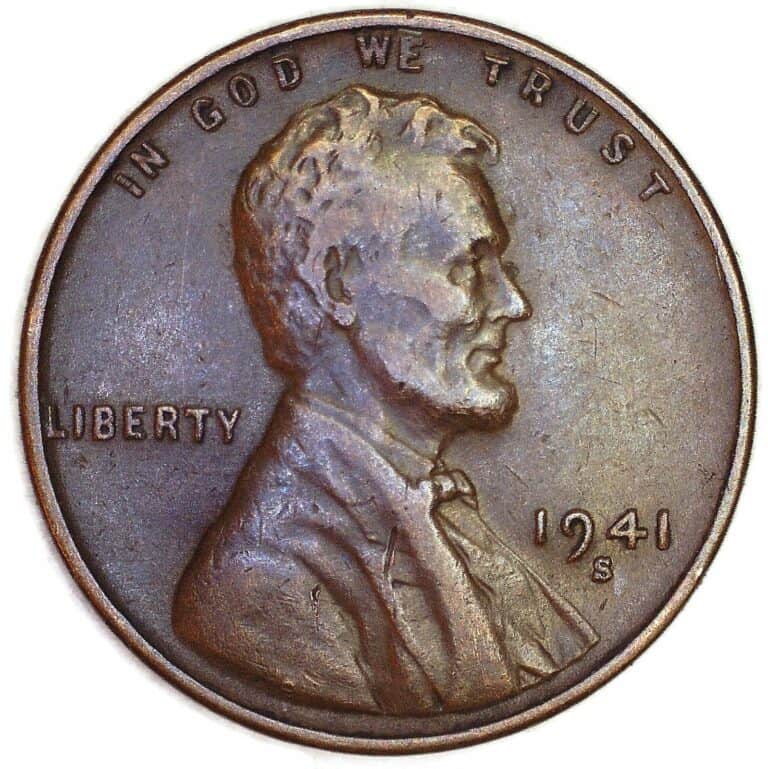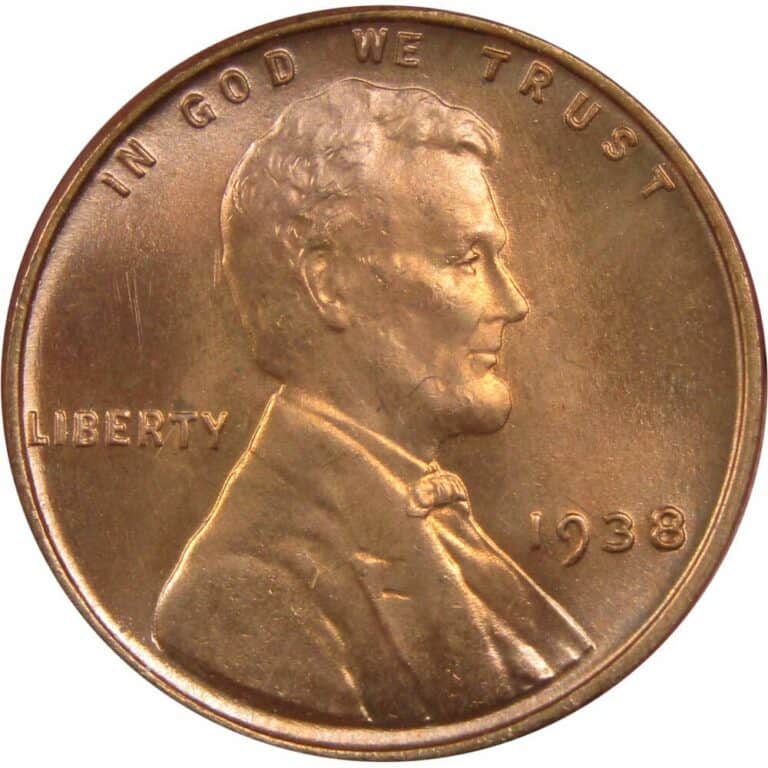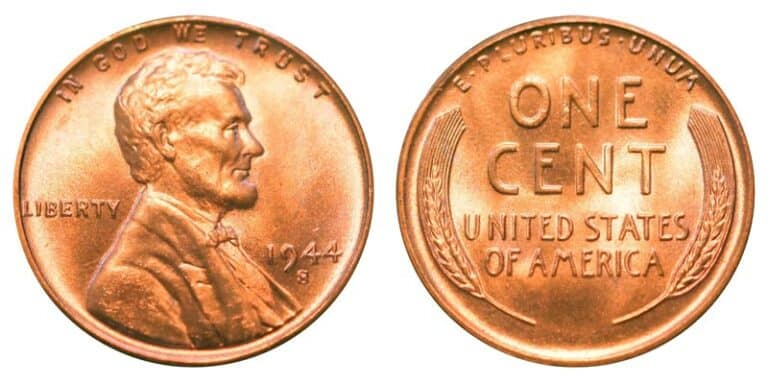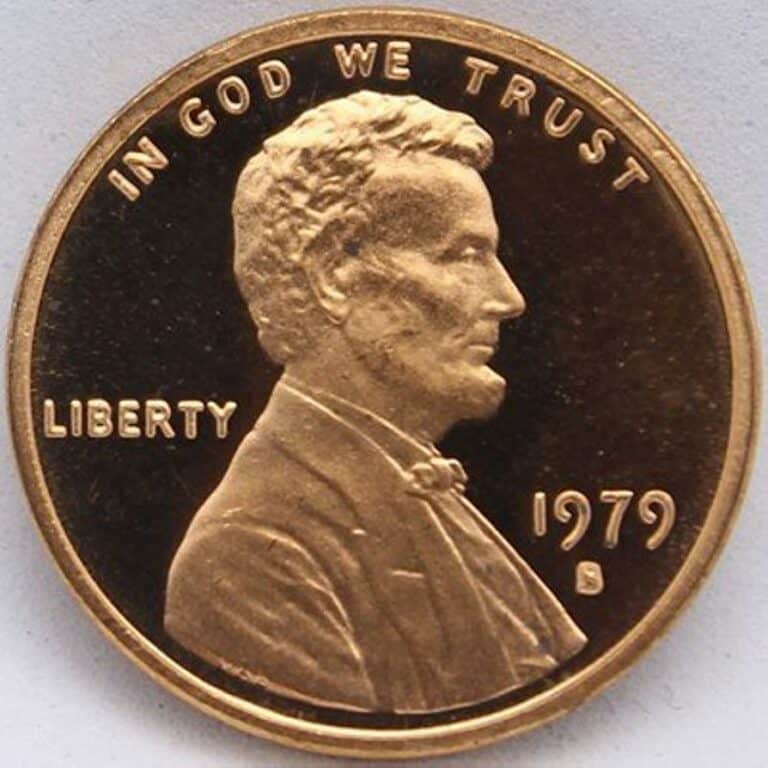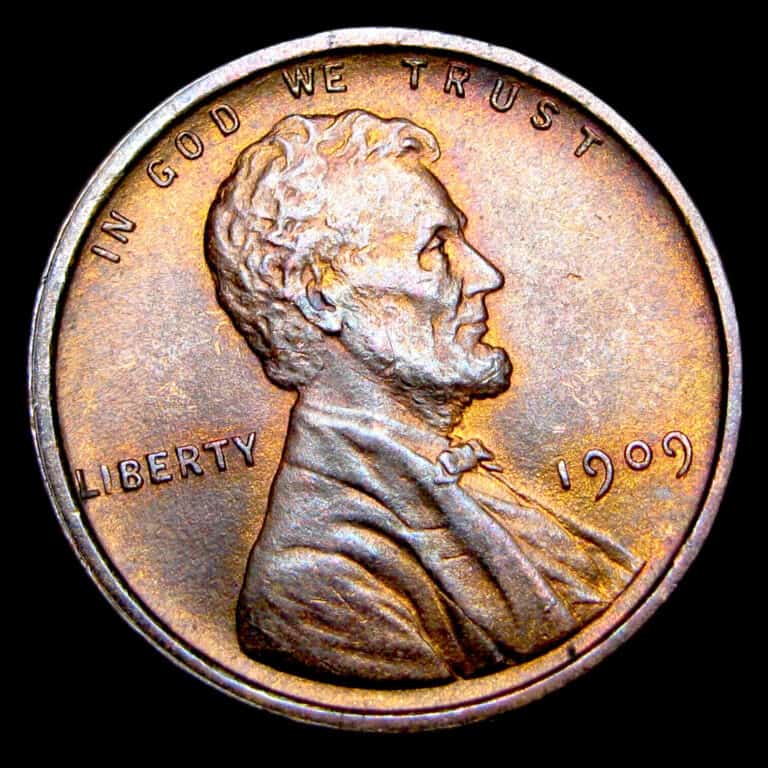1901 Indian Head Penny Value: How Much is it Worth Today?
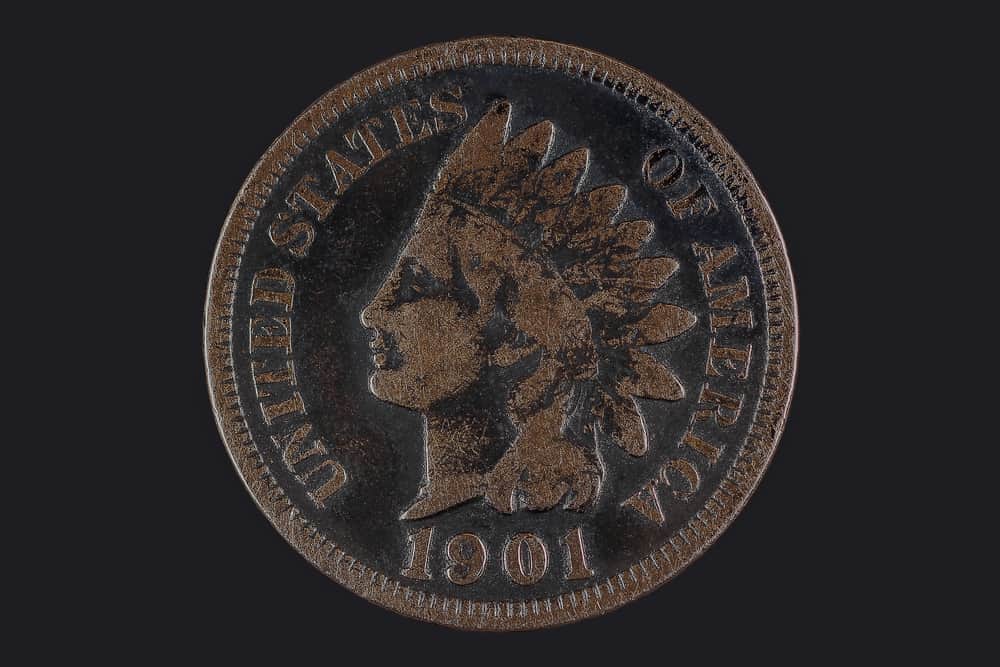
It might be crazy to think that you’re holding an antique that’s over 120 years old, and yet you have a 1901 Indian head penny right in your hands right now!
A memento of the onset of the last century of the second millennium, you might be interested to know about the coin’s value, varieties, grading, errors, and frequently asked questions, so we compiled them all here!
1901 Indian Head Penny Value |
||||
| Variety | BN | RB | RB/RD | RD/CAM |
| 1901 No Mint Mark P Indian Head Penny Value | $34 (AU50BN) | $55 (MS60RB) | $275 (MS65RB) | $6,750 (MS67RD) |
| 1901 Proof Indian Head Penny Value | $215 (PR62BN) | $425 (PR64RB) | $1,350 (PR65RD) | $31,500 (PR67CAM) |
The Indian head penny underwent three changes before settling in the version that the 1901 issue would be minted on. The original Indian head penny, produced only in 1859, was a copper-nickel coin whose reverse design would be replaced by the second version the following year, which included an improved reverse design with a shield.
This second version would also be short-lived, replaced by another in 1864 that retains the design but utilizes bronze instead. This bronze version would then go on to last until the Indian head penny would be replaced by the Lincoln cent in 1909.
While the entire run of the Indian head penny series had a modest annual mintage, the number was certainly rising toward the end, with almost every year after the start of the new century breaking the previous year’s record (before tapering at the end). By 1901, the penny saw its highest mintage at over 79 million pieces before having that record broken again the next year.
This continuous increase in mintage was often attributed to a burgeoning economy in the previous years as well as the proliferation of coin-operated machines which accepts pennies.
1901 No Mint Mark P Indian Head Penny Value
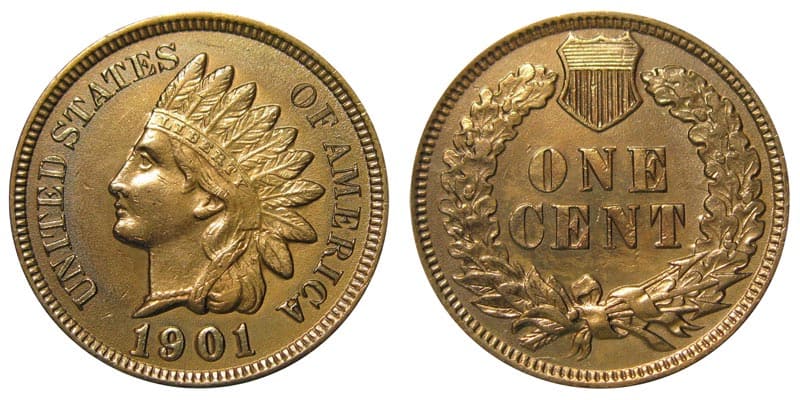
Unlike other coins during its time, the 1901 Indian head penny was exclusively minted in the Philadelphia Mint, as the law mandates that only the Philadelphia Mint was allowed to mint cents. The Indian head penny would also be the last penny to be exclusively minted in that Mint; an act passed in 1906 would allow pennies to be minted at any Mint, and the San Francisco Mint would mint the first mintmarked pennies two years later.
Despite being a coin that’s over 120 years old, the 1901 Indian head penny is a relatively plentiful coin. Aside from the large mintage, another possible reason is that many coin collectors who grew up with these coins kept many of these pennies in their collections. However, better-quality coins, especially Red specimens, remain challenging to find.
Brown coins are abundant, starting cheap at $2 for low circulated grades. The prices would steadily increase even toward uncirculated grades up until MS65, at $175.
Red-Brown coins start at $55 for an MS60 piece, $10 more than its Brown equivalent. It would also steadily increase up to the gem grade MS65 at $275. Better gem examples start at 650 (MS66) and then peak at $1,850 (MS67).
Red coins start at the same price as RB coins at $55. However, the price curves more steeply, with an MS65 specimen costing $700. Higher gem grades command significantly higher premiums, up until MS67 which would set you back $37,000.
The current auction record price is $33,600 for an MS67+RD coin.
1901 Proof Indian Head Penny Value
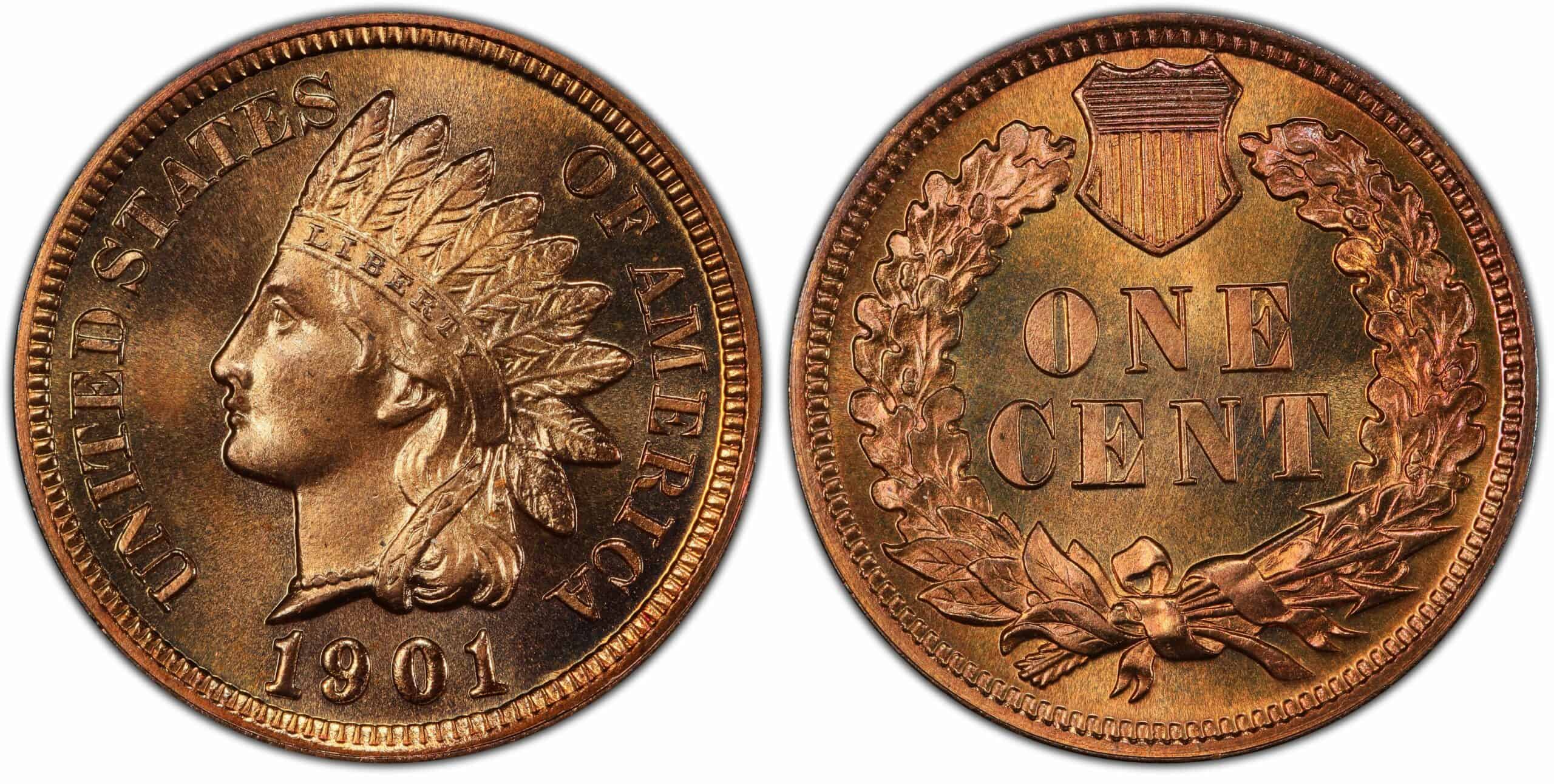
Up until 1964, the Philadelphia Mint was the primary mint that produced proof coins. The 1901 issue was no different, having minted 1,985 proofs of the Indian head penny.
However, given the age of the issue, these proof coins have begun exhibiting traits that were usually attributed to circulation strike coins. Some 1901 proof Indian head pennies have started the oxidizing process that turns the copper on the coin into a brown color.
Additionally, the proof cents did not present as much cameo contrast as its contemporary proof coins. With the low proof sales as the cherry on top, the Red and Cameo varieties of this issue command a high premium on the market.
Although they’re Brown, proofs still have a higher asking price than circulation strike coins. Brown proofs start at $215, steadily increasing until peaking at $2,150 (PR67).
Red-Brown proofs have a similar price curve at non-gem grades, starting at $215 and costing $650 for a PR65 piece. At gem grades, the price hikes steeply, starting from $1,150 and peaking at $5,500 for a PR67+ coin.
Red proofs start to differentiate from the other varieties, starting off high at $350. Gems start at $1,350 and they increase in large increments as the grade increases, with the highest available grade, PR67+ costing as much as $15,000.
Very few Cameo proofs have been known to exist for this issue. In fact, coin grading agencies do not have a reliable price guide for this variety. However, the current auction record for the 1901 proof Indian head penny goes to a PR67+CAM specimen, which sold for $49,938.
1901 Red Indian Head Penny Value
The 1901 Indian head penny was a bronze coin, the third version of the entire Indian head penny coin series that started in 1859 and stopped in 1909. This version was first minted in 1864 and will go on to be the last version of the Indian head penny before being replaced by the Lincoln cent.
Settling on a bronze coin was actually an unoriginal idea of the Mint: before then, the copper-nickel Indian head pennies were hoarded because nickel’s value increased during the Civil War. Private minters were approached by merchants to produce private tokens, now known as Civil War tokens, for commercial use.
Although they were banned by the Coinage Act of 1864, the US Mint honored these tokens by following the most popular composition of these tokens, which was bronze (95% copper, 5% tin and zinc).
Given that the majority of the coin was copper, it was subject to the same chemical reactions that the metal is expected to undergo. Coin grading agencies place special grading designations on these coins based on the color of the coin.
A freshly-minted coin exhibits a luscious red color, indicating that the copper on the coin has yet to be exposed to certain elements that will affect such gorgeous coloring. If a coin manages to retain this red color on at least 90% of its surface, it is given the Red designation.
The red color required to be retained to achieve the RD designation indicates that the coin must not have been introduced to the general circulation, so this designation is only given to coins that are graded MS60 and above. Because of the implications and indications that an RD designation comes with, RD coins command the best prices in the market.
1901 Red-Brown Indian Head Penny Value
While an RD coin has mostly not been exposed to the elements, some coins may have been partially oxidized due to circumstances around its storage. There are many instances when a coin might not have enjoyed proper stashing, and thus some parts of the coin have lost the original red color.
When a coin retains at least 10% of its surface with a red color, the coin does not anymore qualify as RD but is instead designated as a Red-Brown coin, the latter referring to the oxidized color. Although it has already oxidized, retaining even a bit of red color cannot happen to circulated coins, so like the RD coins, the RB designation is exclusively for uncirculated coins.
1901 Brown Indian Head Penny Value
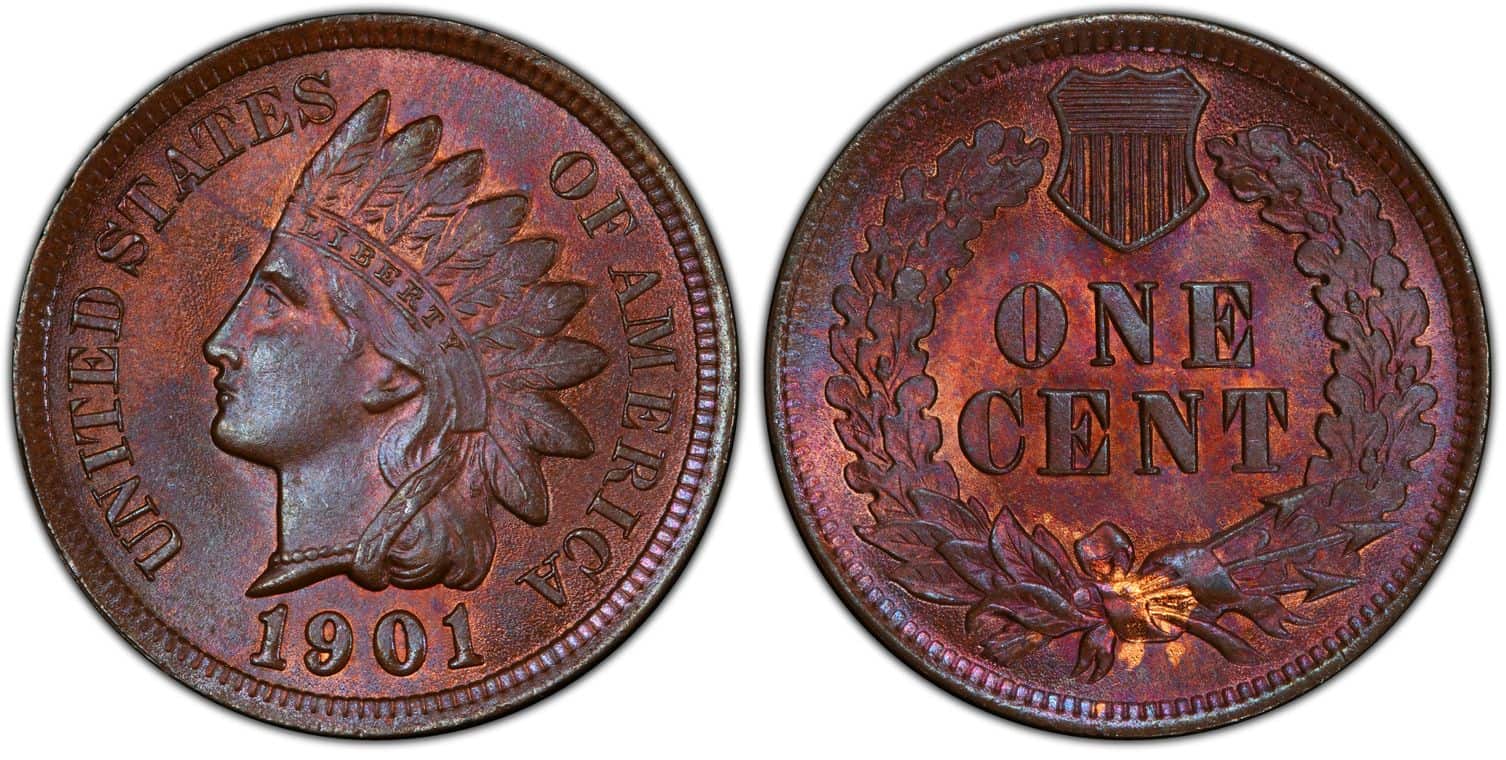
These pennies are given the Brown designation. All circulated coins are immediately given the BN designation. Mint state coins can also be Brown, although they often are valued less than coins with the same grade in a better color.
1901 Indian Head Penny Grading
The 1901 Indian head penny is subject to the Sheldon coin grading scale. This scale, which starts at 1 and ends at 70, is a standard grading scale used by collectors and numismatists to accurately describe the quality of a coin.
Additionally, bronze coins like this issue are also subject to a special grading designation. When the copper on these coins reacts to elements in the atmosphere, the coin changes color. The designation refers to the colors that these coins might have: Red, Red-Brown, and Brown, in descending order of quality.
Rare 1901 Indian Head Penny Error List
1901 Indian Head Penny RPD Error
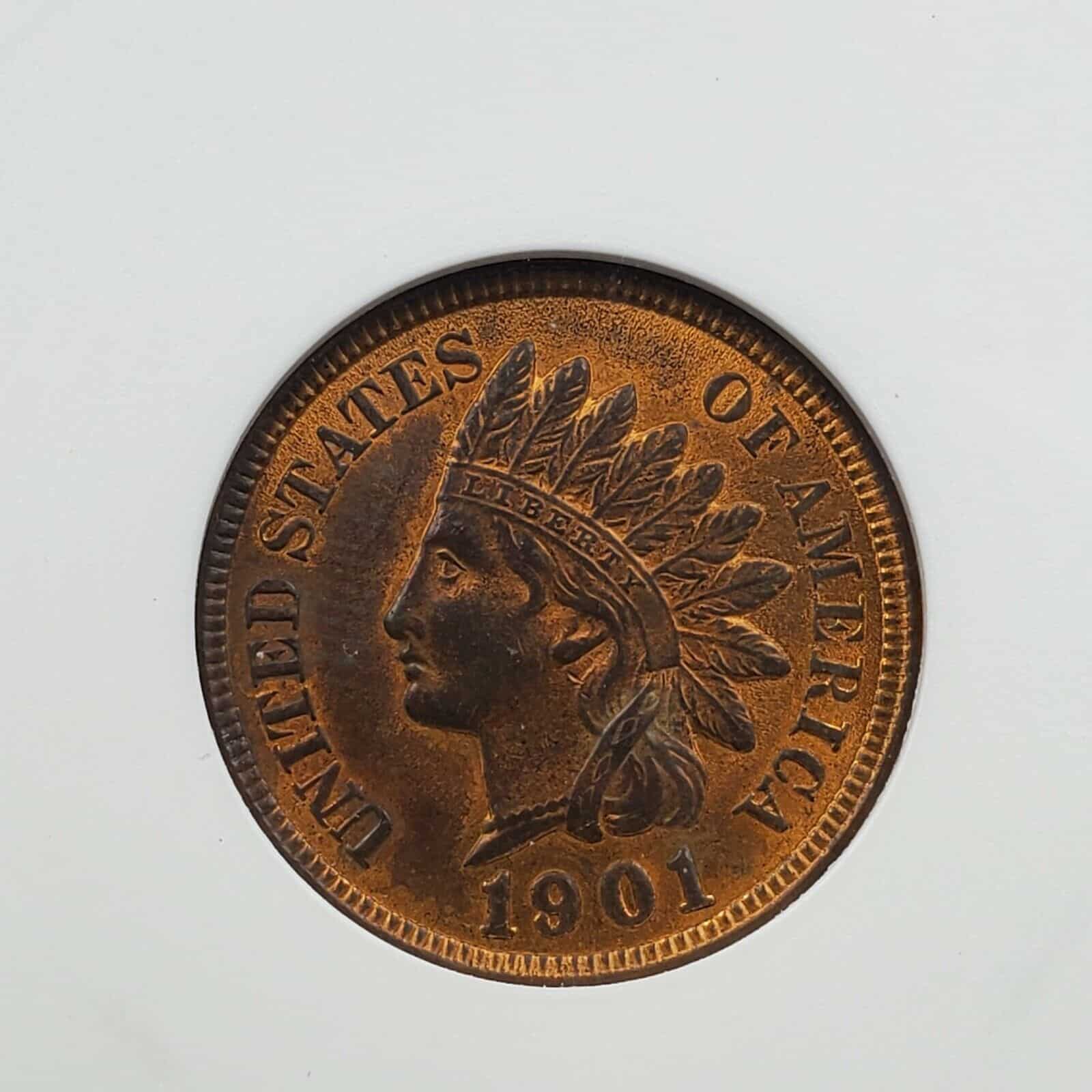
The repunched date error is a common coin error. As implied by the name, the repunched date error is when the date, usually punched in instead of being a part of the die, shows extra impressions aside from the clear one. This error usually occurs when the date punch is repunched multiple times, and the subsequent punches do not properly align.
The 1901 Indian head penny has around 24 known varieties of the RPD error, but the most prominent of them is the FS-301 variety, where you can clearly see the duplicate punches of the date impression on top of the second 1 and underneath the serif on the first 1.
1901 Indian Head Penny RST Error
The rusted die error, as you can tell, is a type of die error. Since dies are usually made of metal, they are susceptible to rusting, especially if they have been overused. When the die starts to rust, the surface of the die with the design will start to exhibit small bumps and roughened areas. Coins minted using this die will manifest these imperfections on their surfaces.
The 1901 Indian head penny has one of the only two prominent varieties of the RST error in the entire Indian head penny series. The error on the penny is very prominent on the reverse of the coin, around the left wreath and the C in CENT.
1901 Indian Head Penny Die Crack Error
The die crack error is another type of die error. As the name suggests, the die crack refers to a crack on the die that transfers the design onto the planchet of the coin. The crack shows up on the coin as an irregular raised streak across certain elements of the coin.
The 1901 Indian head penny has two known varieties of the die crack error. Both varieties exhibit a die crack around the chin of the Indian head on the obverse. These die crack errors are both internal die cracks, which means that these cracks occurred incontinuous with the coin’s edge.
1901 Indian Head Penny FAQ
How much is a 1901 Indian Head Penny worth today?
Depending on the quality of the coin, a 1901 Indian head penny can be worth a lot. Circulated Brown coins only fetch a small price, usually starting around $2. The price doesn’t greatly increase as quality increases, with an MS65BN coin costing around $175.
Having an RB coin starts a bit higher at $55, although they aren’t worth a lot unless you’re looking at gems. RB gem specimens can go as high as $1,850, although these pieces can also be very hard to find.
If you’re looking for substantial value, then you’d want to look at RD and CAM coins (on proof coins). The highest quality known for an RD coin, MS67, can go as high as $37,000.
How rare is a 1901 coin?
The 1901 Indian head penny, despite its age, is not considered a rare coin unless you are looking for fully Red gem examples. Circulated, even some uncirculated grades, pieces are easy to obtain.
As with most bronze coins, Red examples are hard to find, and a Red gem would fetch a lot of money on the market. Additionally, Cameo proofs of the 1901 penny are so rare — only one is currently known to exist, a PR67+CAM piece.
How do you clean a 1901 Indian Head Penny?
If you stumbled across a 1901 Indian head penny, your first instinct might be to clean it up. Well, stop right there. There are many characteristics of many coins that may be washed off when the coin is not handled by a professional, characteristics that can increase the coin’s value. So we highly recommend that you simply leave the task of cleaning coins to professionals.
